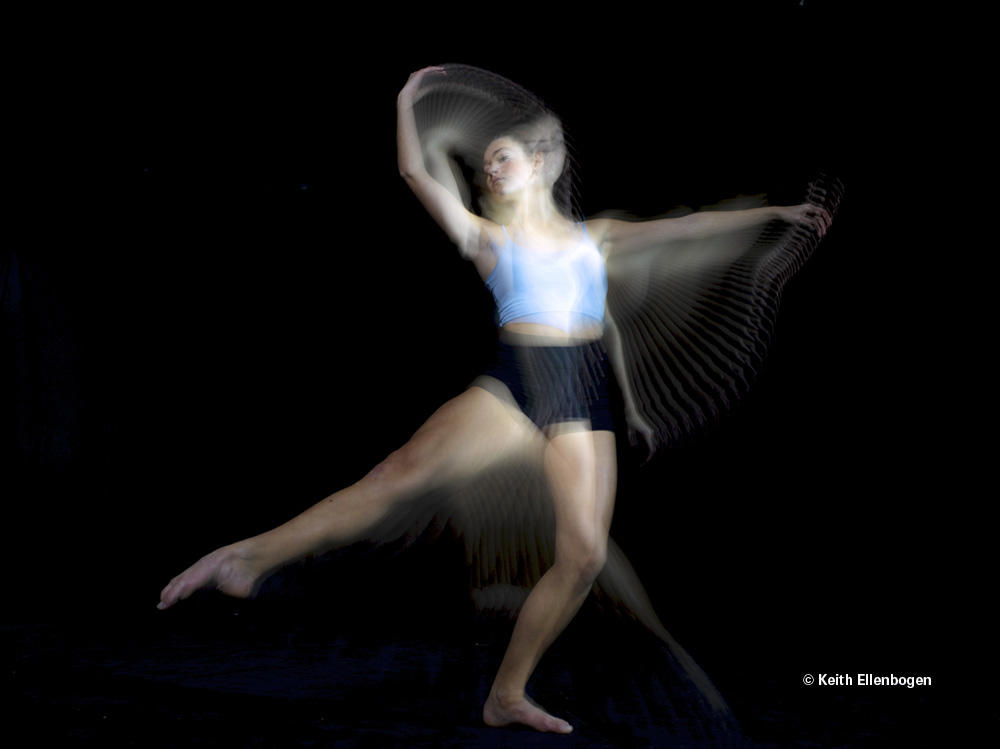Photos and text by Keith Ellenbogen, CAST Visiting Artist
My work focuses on underwater photography, but sometimes it’s good to step away and try to use my photography skills in a totally different way, enabled by the fantastic resources here at MIT. I view each day here as a learning and creative challenge. One of the many fascinating projects I’ve worked on as a CAST Visiting Artist is revisiting some of Doc Edgerton’s photography and technological innovations. Edgerton, whose work improved the electronic flash, was also a pioneer in underwater photography, working with Jacques Cousteau onboard the Calypso to improve the technology of underwater imaging. As a Visiting Artist and photographer, one thing that is especially meaningful to me is that in many ways, electronic flash developments from here in the Edgerton Center are a critical part of modern photography that we often take for granted.
I pass examples of Edgerton’s work every day, and I’m constantly reminded and inspired by these early days. I have seen his unprecedented multi-strobe shot of a golfer swinging a club, taken at MIT with a strobe flashing with a range of 10 to 120 times per second. I was able to use the original multi-strobe that Edgerton himself built, thanks to enthusiastic guidance from Dr. Jim Bales, Assistant Director of MIT’s Edgerton Center, who has been more than gracious with his support during this residency. With that in mind, I wanted to visually explore some of the equipment that’s still uniquely Edgerton as well include a modern Profoto B2 250 to pop the subject with a more intense light. “I love the way the Ellenbogen incorporated Profoto flash with the Edgerton multi strobe to demark the beginning or end of a subject’s movement. That isn’t an effect I’ve seen before!” said Bales after seeing the resulting photographs.
MIT is a school where ideas can become a reality. For this project, I wanted to look at multiple perspectives of dynamic and visually spectacular movements shown through multiple cameras and bursts of light that expand like an accordion within fractions of a second. I had an idea to use 6 medium-format cameras, and reached out to a colleague, Scott Nidermaier, Director of Education at Phase One US, manufacturer of awesome medium format cameras. After pitching the idea to Scott to use six cameras, he thought this could be an extraordinary collaboration, and our experiment began. A medium format camera has a larger sensor, and is capable of a much larger dynamic range, and within a studio setup like this, is hands-down my preferred camera choice. These cameras will enable beautiful fine art prints, which we intend to exhibit at MIT.
These projects require not only creative expertise, but also technical understanding of how things work. I consider myself lucky to be collaborating with Allan Adams, Associate Professor of Physics at MIT. Understanding the geometry of the way light will bounce and strobes pulse is as creative as the final image, and the success of the final project is another example of how MIT fosters an interdisciplinary approach to creativity. As a photographer, I’m constantly chasing light, and working with Allan makes this process of discovery and creativity all the more enjoyable.
Meanwhile, back at MIT, I reached out to CAST for help connecting with students who could help us maximize the creative potential of this setup. We engaged MIT students, including many Arts Scholars, with an array of extraordinary skills, such as yo-yo, ballroom dance, poi spinning, and various athletic skills. When the students heard about this opportunity to work with such outstanding cameras, their imaginativeness in bringing stylish and colorful attire immeasurably enhanced the final products of the shoot. “Keith’s direction in front of the lights actually gave me an insight into a different language of motion,” said Arts Scholar and shoot participant Sam Fomon ’16. “I had to think about the dynamics of my body within the analogies we shared and outside the technical terminology by which I would normally categorize my motions in poi spinning. The shared language we reached was expressive, and I really enjoyed that.” Momentum built, and as more students outside our original group heard about these cameras, more volunteers approached us with ideas about how their talents might be showcased with these cameras.
As a Visiting Artist, one of my goals is to integrate into the community here. It was rewarding that as this project developed, students were excited to be part of an art project. I found our participants to be extraordinarily creative. As I saw their skills and movements and learned more about their particular areas of expertise, the differences in their strengths challenged our shoot team to adapt to each of their individual movements. This pushed the dynamics between photographer and performer and created a strong working relationship. The resulting shots, seen here, are not just works of art, but also memories for a lifetime.
I would especially like to thank Phase One for their generous support!
Keith Ellenbogen is an Assistant Professor of Photography at SUNY / Fashion Institute of Technology in New York.







